Dysfunctional Family Roles Addiction Worksheet
Are you seeking a practical and comprehensive tool to better understand the dynamics of dysfunctional family roles in addiction? Look no further than this helpful worksheet. Designed for those who are interested in exploring the intricate relationships within families affected by addiction, this worksheet delves into the various roles that individuals often assume in these challenging situations.
Table of Images 👆
More Other Worksheets
Kindergarten Worksheet My RoomSpanish Verb Worksheets
Cooking Vocabulary Worksheet
DNA Code Worksheet
Meiosis Worksheet Answer Key
Art Handouts and Worksheets
7 Elements of Art Worksheets
All Amendment Worksheet
Symmetry Art Worksheets
Daily Meal Planning Worksheet
What is the role of the "Enabler" in a dysfunctional family affected by addiction?
The "Enabler" in a dysfunctional family affected by addiction often plays a role in supporting, justifying, or enabling the addictive behaviors of the person struggling with addiction. They may provide financial, emotional, or physical support that allows the individual's harmful behaviors to continue. The enabler typically tries to maintain harmony within the family by avoiding conflict or confronting the addiction, which inadvertently perpetuates the cycle of dysfunction and enables the addicted individual to avoid facing the consequences of their actions.
How does the "Hero" role typically manifest in a family affected by addiction?
In a family affected by addiction, the "Hero" role typically manifests as a family member who takes on a perfectionist and overachieving attitude to compensate for the dysfunction caused by the addiction. They often strive to maintain a sense of normalcy and control within the family, masking the underlying issues and protecting the family's image from external scrutiny. The Hero may also try to excel in school or work to offset the chaos at home, and they may feel a sense of responsibility to keep the family together despite the challenges posed by the addiction.
Describe the role of the "Scapegoat" in a dysfunctional family affected by addiction.
In a dysfunctional family affected by addiction, the scapegoat typically plays the role of bearing the blame, shame, and responsibility for the family's problems, often being unfairly singled out and targeted for criticism. They may be seen as the cause of tension or conflict within the family, serving as a distraction from addressing the underlying issues related to addiction. The scapegoat can also serve to maintain the dysfunctional dynamics by allowing other family members to avoid addressing their own roles or contributions to the family problems.
How does the "Lost Child" role contribute to the dysfunction within a family affected by addiction?
The "Lost Child" role in a family affected by addiction typically involves a child who withdraws and isolates themselves to cope with the chaos and instability caused by the addiction. This role can contribute to dysfunction within the family as the "Lost Child" may not receive the attention, guidance, and support they need from their parents or siblings. Their silence and invisible presence can perpetuate the denial and avoidance of addressing the addiction issue, further deepening the dysfunction within the family system.
Explain the characteristics and role of the "Mascot" in a dysfunctional family affected by addiction.
In a dysfunctional family affected by addiction, the Mascot is a role typically taken on by one of the family members. The Mascot uses humor, charm, and distractions to divert attention away from the addiction and the family's problems. They often try to lighten the mood, make jokes, and be the peacemaker in the family to avoid addressing the underlying issues. However, the Mascot's behavior can also enable the addiction by preventing the family from confronting and dealing with the reality of the situation. Ultimately, the role of the Mascot in a dysfunctional family affected by addiction is to provide temporary relief from the pain and chaos, but at the cost of perpetuating denial and avoiding necessary conversations and interventions.
What is the purpose of the "Chief Enabler" role within a family affected by addiction?
The purpose of the "Chief Enabler" role within a family affected by addiction is to unintentionally enable the addicted individual's destructive behavior by shielding them from facing consequences, making excuses for their actions, and enabling their substance abuse. The Chief Enabler often sacrifices their own needs and boundaries in an attempt to maintain peace and stability in the family, ultimately reinforcing the cycle of addiction by facilitating the addictive behavior of their loved one.
Describe the role of the "Family Hero" in enabling and maintaining dysfunction in a family affected by addiction.
The "Family Hero" in a family affected by addiction often takes on the role of maintaining a facade of normalcy and success within the family unit. By overachieving, excelling in school or career, and being the "perfect" child or sibling, the Family Hero seeks to distract attention from the addict and the dysfunction present in the family. This behavior enables the denial and minimization of the addiction problem, as the focus shifts to the Family Hero's accomplishments rather than addressing the underlying issues. Additionally, by not confronting the addiction and dysfunctional dynamics within the family, the Family Hero inadvertently perpetuates and maintains the cycle of dysfunction by keeping the status quo and preventing necessary interventions and changes from occurring.
How does the "Family Scapegoat" role serve as an outlet for blame and diversion within a family affected by addiction?
In a family affected by addiction, the "Family Scapegoat" role serves as an outlet for blame and diversion by allowing other family members to avoid addressing their own contributions to the dysfunctional dynamics within the family. The scapegoat is often blamed for the family's problems and acts as a distraction from the addiction issues at hand. By focusing on the scapegoat, family members can avoid taking responsibility for their own behavior and enable the continuation of unhealthy patterns within the family system.
Explain the effects of the "Family Lost Child" role on the overall dynamics of a dysfunctional family affected by addiction.
The "Family Lost Child" role in a dysfunctional family affected by addiction typically involves a child who feels invisible, neglected, or abandoned due to the focus being on the addicted member. This role can lead to feelings of loneliness, low self-esteem, and a sense of not belonging within the family. The Lost Child may strive to avoid conflict and seek solace in solitude or unhealthy coping mechanisms. This dynamic can further perpetuate the dysfunction within the family by allowing issues to go unaddressed, leading to a lack of communication, emotional disconnection, and internalized emotional struggles for the Lost Child.
What are some common characteristics exhibited by the "Family Mascot" role in a family affected by addiction?
The "Family Mascot" role in a family affected by addiction often exhibits characteristics such as seeking attention and validation, maintaining a sense of humor to deflect from the seriousness of the addiction, and taking on the responsibility of keeping peace and harmony within the family. They may also strive to be the "perfect" child or sibling to compensate for the chaos caused by the addiction, suppressing their own emotional needs and feelings to prioritize the needs of others in the family.
Have something to share?
Who is Worksheeto?
At Worksheeto, we are committed to delivering an extensive and varied portfolio of superior quality worksheets, designed to address the educational demands of students, educators, and parents.





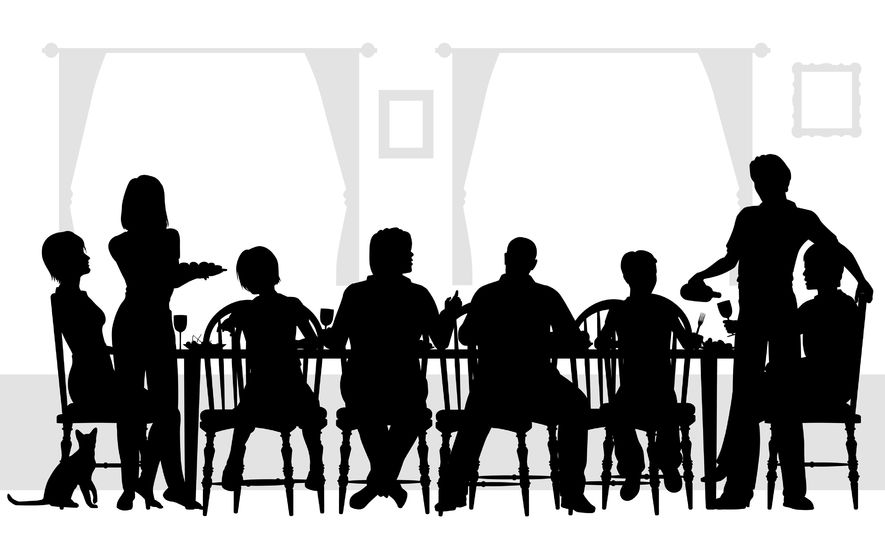




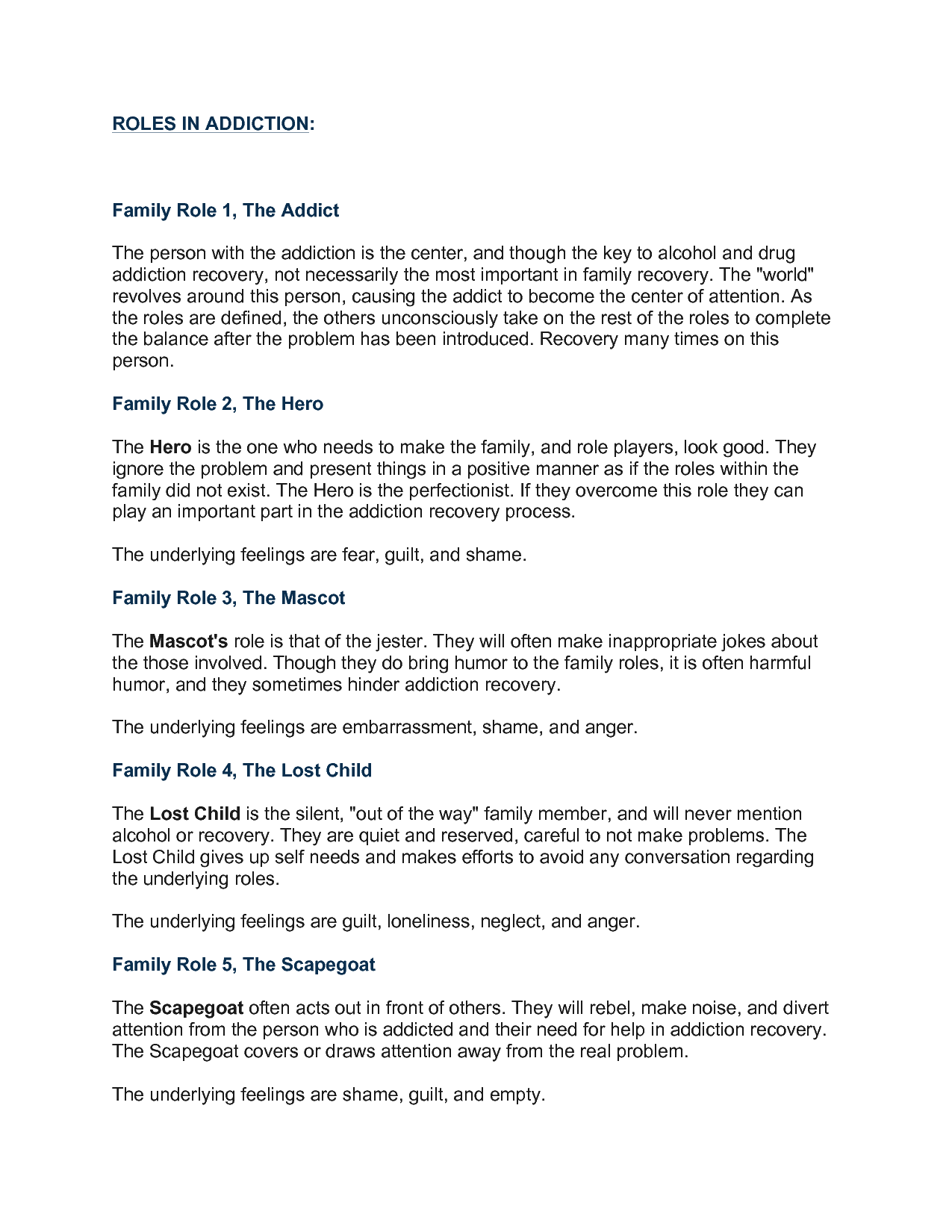


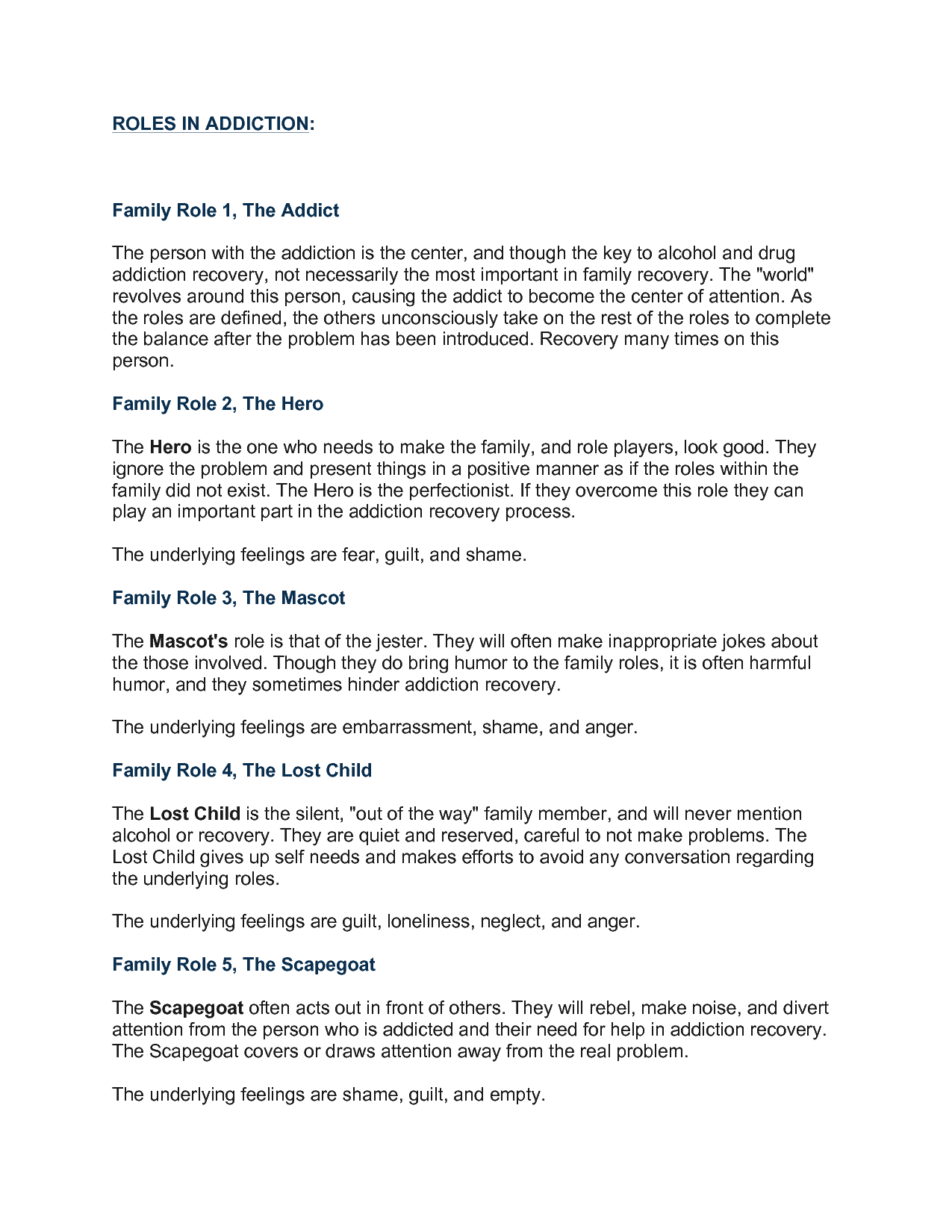
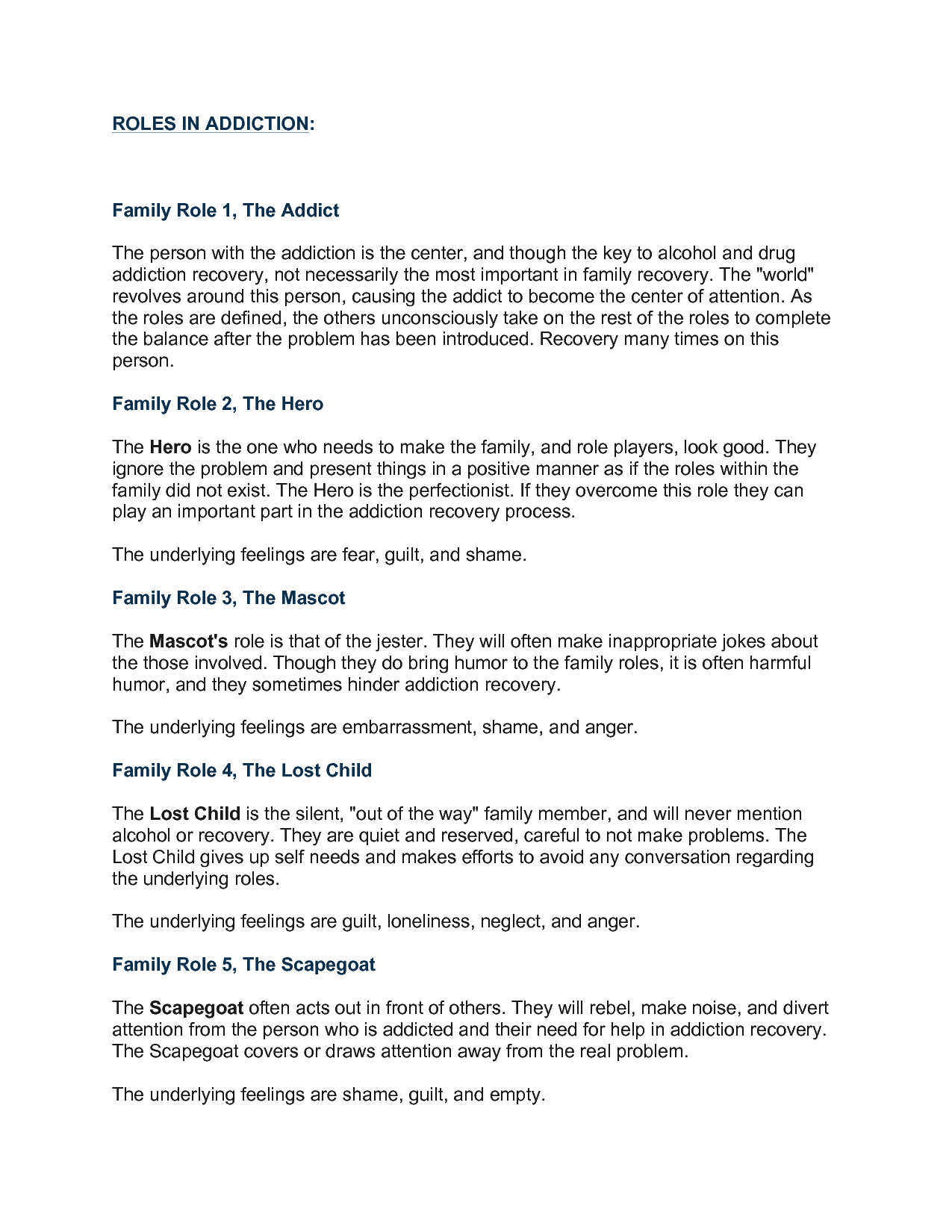
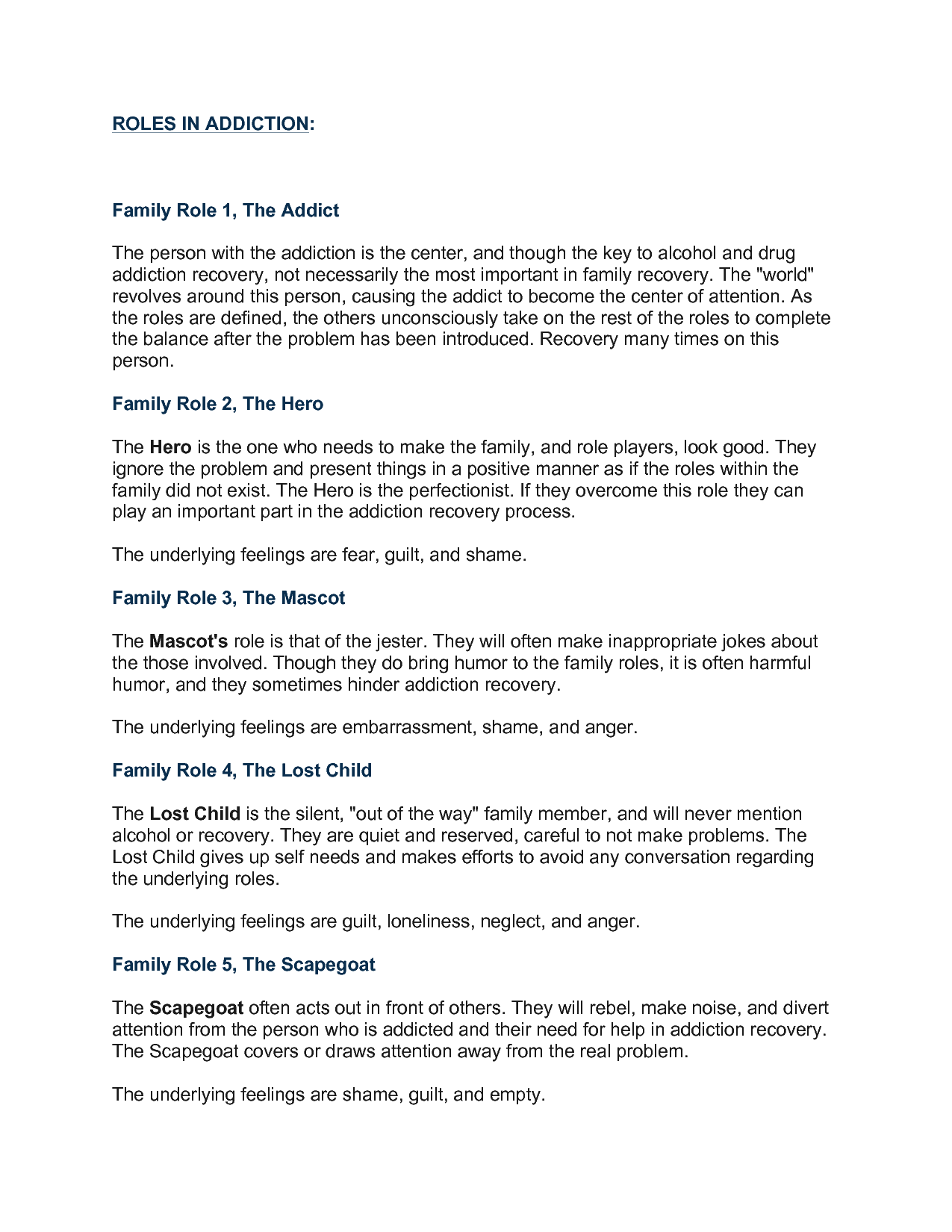


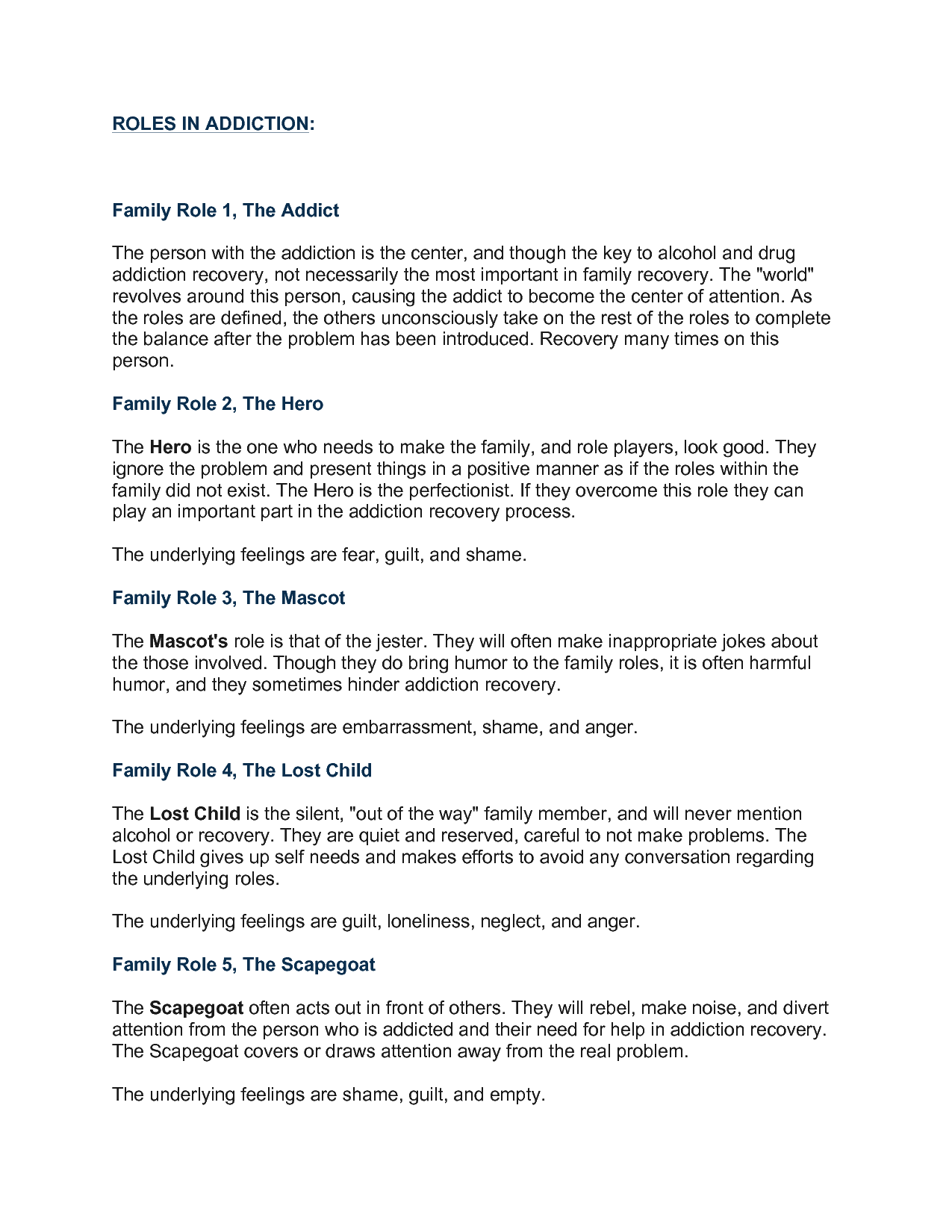

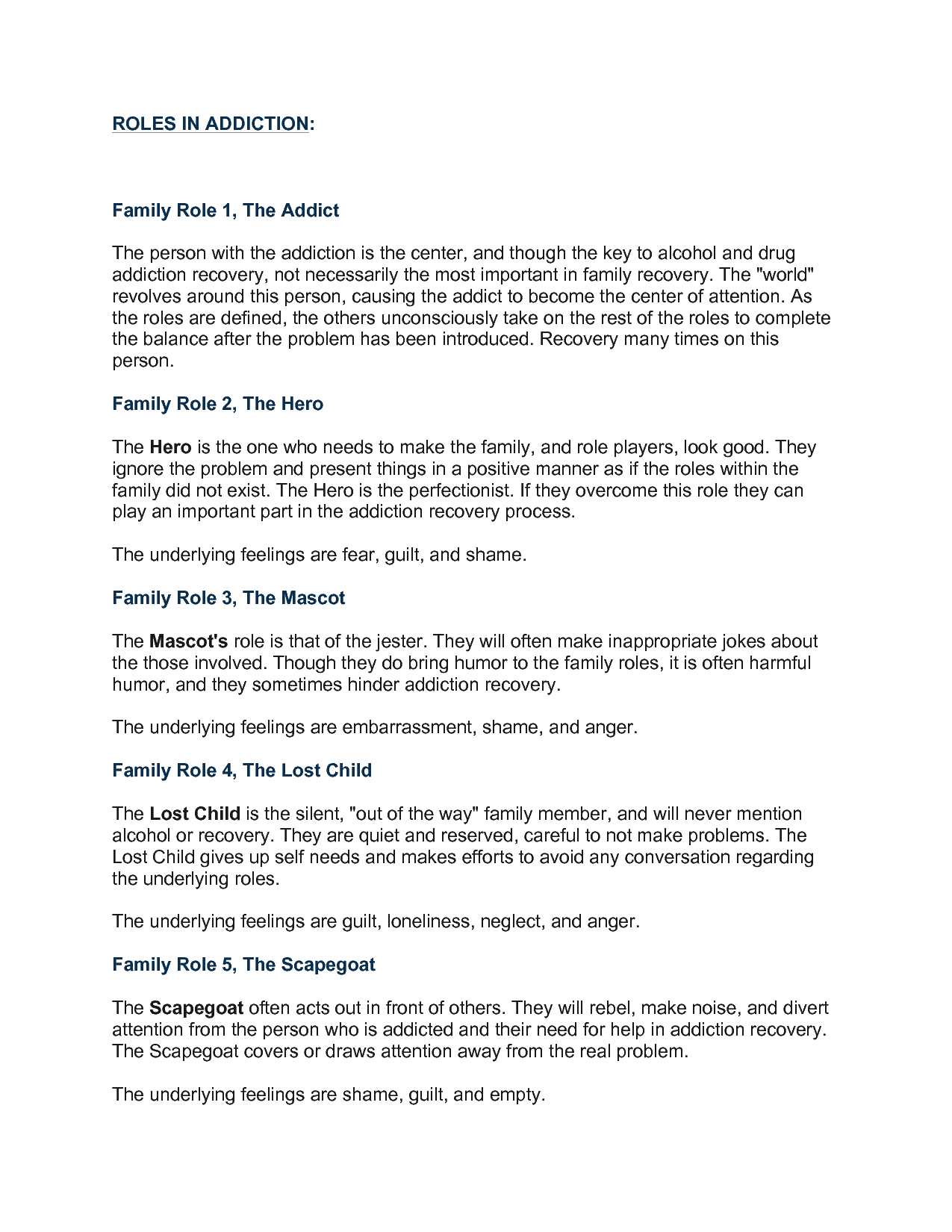














Comments